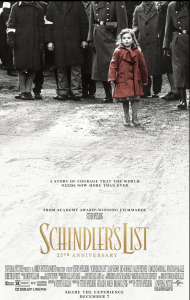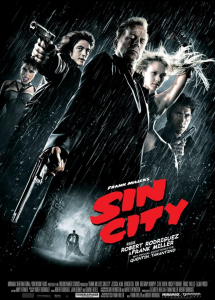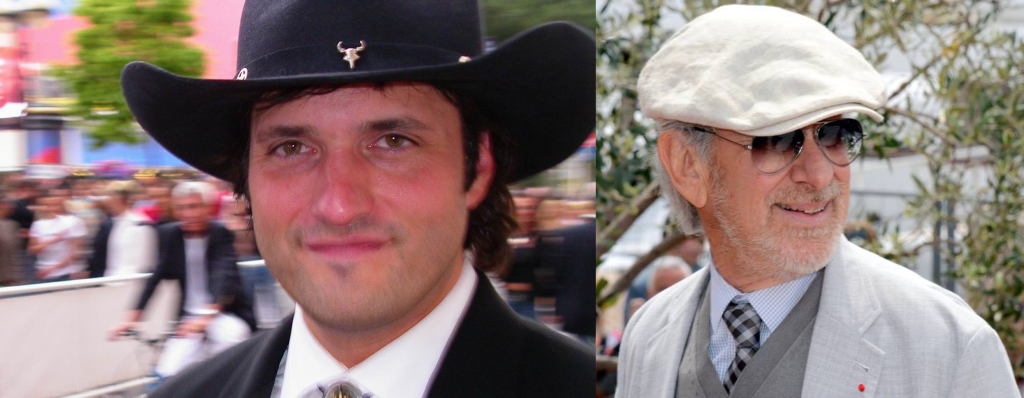

World War II was one of the darkest times in history, even worse than World War I. Many countries suffered deeply because of revenge, discrimination, and indifference.
Germany, in particular, was devastated under the rule of Adolf Hitler, whose hatred of Jewish people led to the murder of millions. Yet, in the midst of this horror, an unlikely hero emerged: a businessman named Oskar Schindler. While running his factories in Germany, Austria, and Poland, he began protecting his Jewish workers. As more of them were targeted and killed, he took action by placing them under his protection. He employed hundreds of Jews and made it a rule that no worker under him was to be harmed—this helped save many lives.
Schindler’s story was first told in the book Schindler’s Ark by Thomas Keneally, inspired by one of the survivors. Later, director Steven Spielberg, who is Jewish himself, turned the story into the powerful film Schindler’s List. The film went on to win several Academy Awards, including Best Picture and Best Director. I didn’t know much about it until I was 19. Being a fan of Spielberg’s other films like Jurassic Park, Jaws, and E.T., I decided to give it a watch.
Watching Schindler’s List was an emotional experience—it was heartbreaking but also inspiring. It’s not just a movie about history; it’s a story about survival. That’s what makes it so powerful and unforgettable for me.
As someone who is Autistic and passionate about movies, I enjoy both classic and modern films, depending on how much I connect with them. One of my favorite actresses is Jessica Alba. In 2005, she starred in three films that were all tied to literature in some way. Sin City directed by Robert Rodriguez was based on the graphic novels of the same name, Fantastic Four directed by Tim Story was adapted from the comics, and Into the Blue directed by John Stockwell was a remake of The Deep, a movie based on a book by Peter Benchley—who also wrote Jaws, which Spielberg directed.
Just as I’m drawn to Spielberg films that I feel connected to, I’m also drawn to Jessica Alba’s work. Like Schindler’s List, I first saw Sin City on home video. And even though Sin City is a fictional story while Schindler’s List is based on real events, I noticed some striking similarities in their storytelling, which inspired me to compare them in this piece.
– Vikram
Even though Schindler’s List and Sin City come from completely different genres—historical drama and comic book noir respectively—they both use powerful visual storytelling and emotional depth to explore common themes like survival, sacrifice, justice, the loss of innocence, and the impact of individual action (and the use of black and white is present in both). What connects them is not the world they depict, but the emotional truths they reveal within those worlds. The following points compare the two films through their most memorable and meaningful scenes.
1. Innocence in a Violent World
In Schindler’s List, the liquidation of the Kraków ghetto is one of the film’s most haunting sequences. We witness terror from Oskar Schindler’s point of view as he looks down at the chaos: families torn apart, elderly people murdered, children hiding under beds. In the middle of this, we see a little girl in a red coat walking through the madness. This single splash of colour emphasizes innocence in the face of evil. When Schindler later sees her red coat among the corpses, it becomes the moment that transforms him from a bystander to a saviour.
In Sin City, a similar dynamic appears when Detective Hartigan risks his life to save 11-year-old Nancy Callahan from a molester, Junior Roark. Shot multiple times, betrayed by the system, and sent to prison, Hartigan does it all to protect Nancy’s innocence. When Junior returns years later to hunt Nancy again, Hartigan sacrifices himself to keep her safe. Just like the girl in the red coat, Nancy becomes a symbol of hope and purity in a corrupt world.
Both scenes show that even when the world is consumed by violence, innocence can still shine through—and it’s often the driving force behind great personal change.
2. Corruption and Resistance
In Schindler’s List, we see a world where laws protect murderers and punish victims. The Nazis turn genocide into bureaucracy. Yet Oskar Schindler finds a way to resist. He creates a list of names—Jews to be transferred to his factory instead of being sent to Auschwitz. The scene where he dictates these names to Itzhak Stern is filled with tension. Each name is a life, a defiance of the system.
In Sin City, resistance looks different but feels familiar. In “The Big Fat Kill,” Dwight and the women of Old Town face off against a corrupt cop, Jackie Boy, and the threat of gang warfare. After killing him, they must prevent a power shift that would destroy their freedom. The women, led by Gail, and Dwight use cunning, manipulation, and firepower to protect their territory. Like Schindler, they operate within a rotten system and fight to bend it in their favor.
Both films depict heroes who work from within broken structures—using wit, willpower, and nerve to save lives or protect their people.
3. Redemption Through Sacrifice
At the start of Schindler’s List, Schindler is self-interested, more concerned with wealth than ethics. But as he sees the horror around him, his priorities shift. In the final scene, after the war has ended, he breaks down in tears, saying, “I could have got more.” His remorse shows how deeply he’s changed. He gave up his fortune to save over 1,000 Jews, and it still doesn’t feel enough to him. That’s true redemption.
In Sin City, Marv’s arc in “The Hard Goodbye” also revolves around redemption. A brutal man with a violent past, he becomes a one-man army to avenge Goldie, the only woman who showed him kindness. Though framed and hunted, he never backs down. In the end, he is executed for crimes he didn’t commit, but he dies knowing he brought justice to her killer.
Both Schindler and Marv find redemption through sacrifice. Their violent worlds don’t reward goodness—but that’s what makes their choices so powerful.
4. Power and Powerlessness
Power is one of the key forces shaping both films. In Schindler’s List, the Jewish characters have no control over their lives. One moment they are workers, the next they are prisoners or corpses. Amon Göth, the sadistic camp commander, illustrates the terrifying randomness of Nazi power. Yet through determination and strategy, Schindler gradually uses his privilege to shield his workers, showing how even within horror, agency can be reclaimed.
In Sin City, power is similarly unbalanced. Senator Roark and his son act with impunity, controlling the police and courts. Hartigan is framed and imprisoned for crimes he stopped. But by the end, he chooses to die on his own terms, protecting Nancy from further harm. His suicide is not surrender—it’s an act of strength in a world that tried to take all power from him.
In both films, characters begin powerless but end by taking control, even if it means paying the ultimate price.
5. Memory and Legacy
The final moments of Schindler’s List blend fiction with reality: the actors and real-life survivors place stones on Schindler’s grave. This moment goes beyond storytelling—it becomes memory. Schindler’s legacy lives on through the people he saved, and the film itself helps preserve that truth for future generations.
In Sin City, legacy plays out on a more personal level. Marv says Goldie is “worth dying for” and he means it. He doesn’t care how history remembers him—he just wants the truth to be known. Hartigan’s legacy is Nancy’s safety. He dies knowing that someone good will live because of him.
Both films ask us to think about how we are remembered, and how individual acts—whether public or personal—can echo long after we’re gone.

